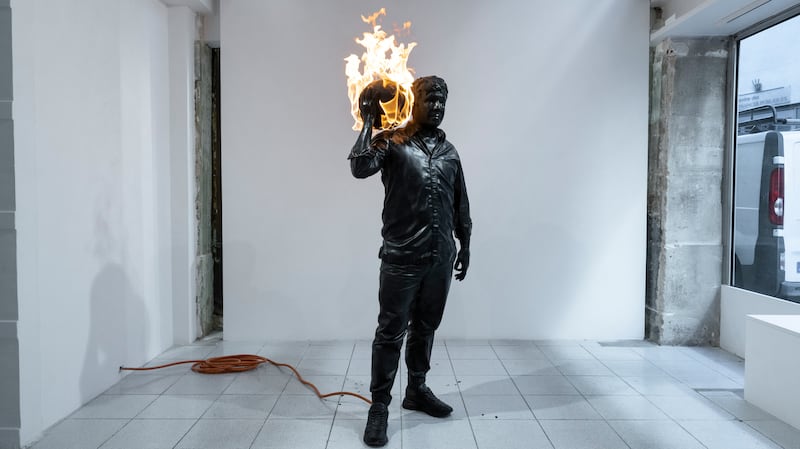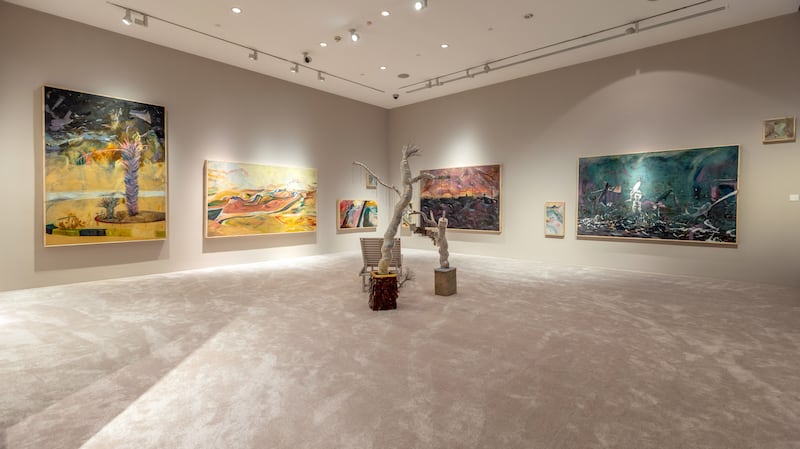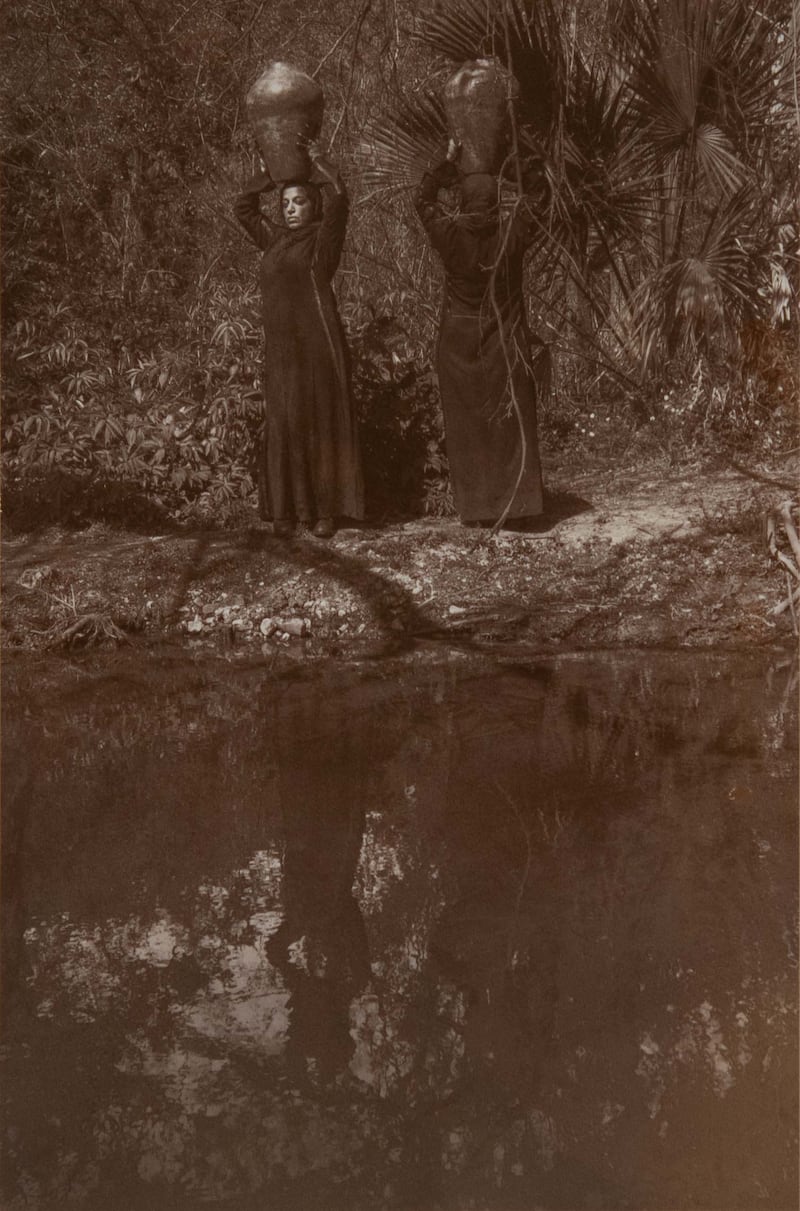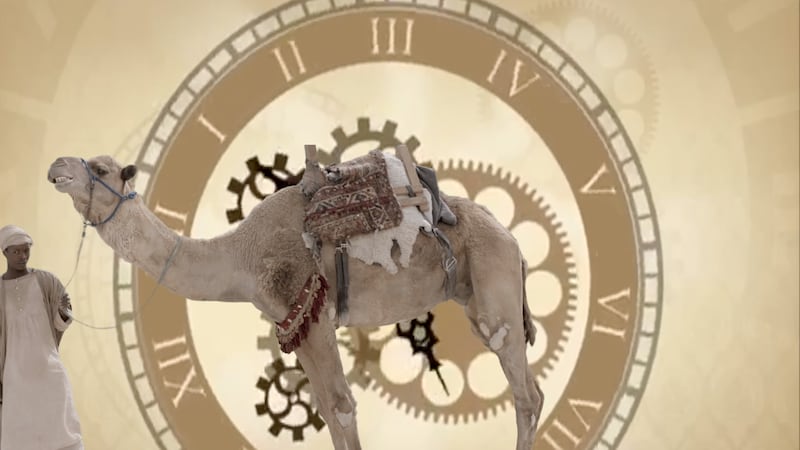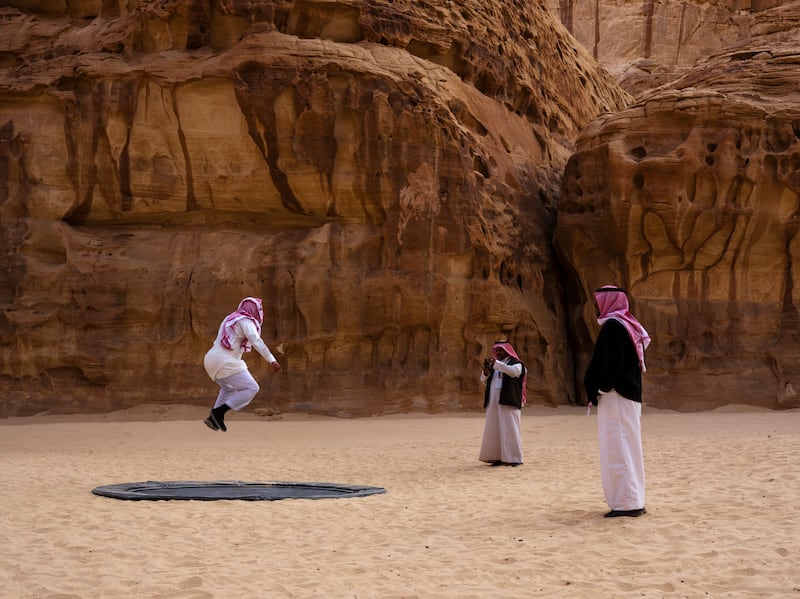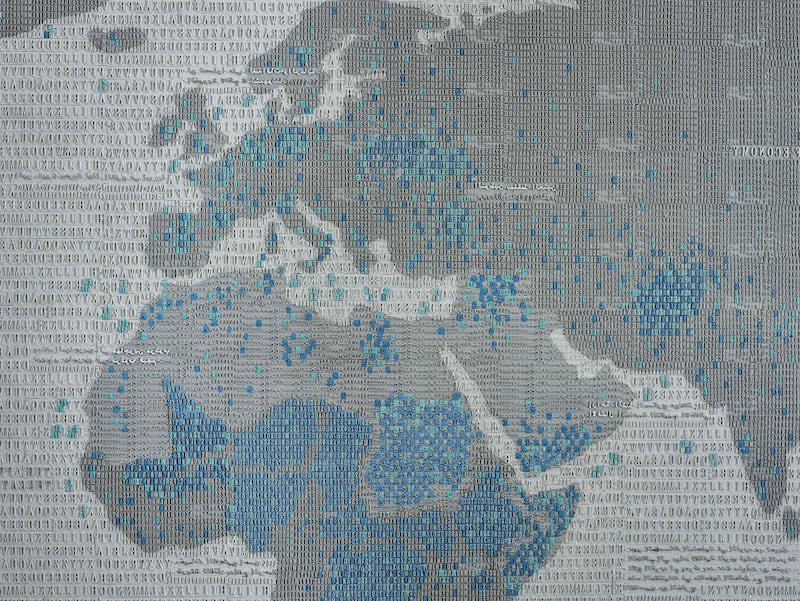Over the past few months, there has been a rise of climate activists gluing themselves to, or throwing liquids on, art at museums as a means to bring attention to environmental issues.
While these headline-grabbing antics have split popular opinion, many artists are climate activists in their own right, choosing a more measured approach by speaking through their art.
With Cop28 less than a month away, here are some Arab artists creating thought-provoking work that invites the public to reassess their relationship with the world and understand the imminent dangers of the climate crises.
Hashel Al Lamki
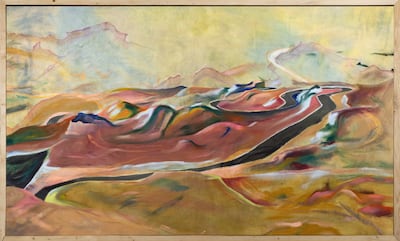
Emirati painter and multidisciplinary artist Al Lamki explores the links between people and the environment through his art.
Working across painting and sculptural works, Al Lamki’s practice records the legacies of these landscapes and their relationship with man – particularly how they mould and influence each other. Represented by Tabari Artspace, Al Lamki records everything from mountain ranges to golf courses and architectural feats and uses them to investigate facets of human migration, colonisation and climate change.
Born in Al Ain, Al Lamki has observed the changes in the landscapes of his city and the greater UAE through the development of the Gulf.
Through his considered use of materials, such as creating pigments from local and regional natural resources, and using scientifically inspired methodologies to sketch and paint, Al Lamki records and reveals the fragility of materials and our links to the landscapes we inhabit.
A powerful underlying idea in Al Lamki's work is the dependency of mankind on natural resources and our collective responsibility in making a change to the approaching climate crises already effecting many parts of the world.
Sama Alshaibi
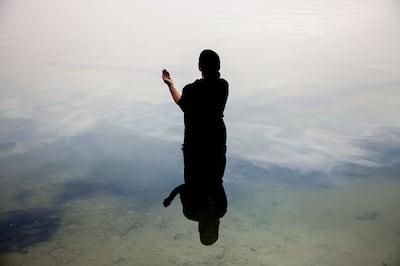
Conceptual and multimedia artist Alshaibi uses the mediums of performance, video, photography and installation to make a commentary on power struggles that follow war and exile. These include the way in which resources, land, mobility and political agency are compromised.
Represented by Ayyam gallery, Alshaibi inserts herself – her likeness and body – into her practice, not as self-portraits but as a vehicle to express ideas and concepts.
The Iraqi / Palestinian artist’s continuing project Silsila – the Arabic word for ‘chain’ or ‘link’ – is a multimedia project depicting Alshaibi’s seven-year journey through the deserts and endangered water sources of the Middle East and North African region.
Inspired by the great 14th century Moroccan traveller Ibn Battuta, Alshaibi examines connections between varying cultures under threat of displacement, climate change and other global issues.
Sophia Al Maria
American-Qatari artist, writer and filmmaker Al Maria’s multidisciplinary practice is influenced by pop culture, anime, Arabic poetry, sci-fi and her personal experience of pollution and climate change. Raised between the Pacific Northwest and the Gulf, Al Maria saw first-hand the effects of pollution and global warming, and she weaves these experiences and fears into her practice.
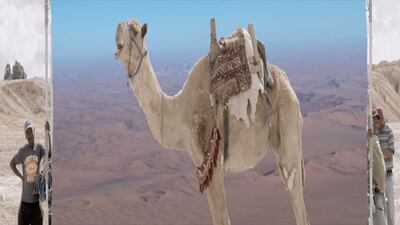
Al Maria uses sci-fi and fantasy-inspired styles to depict a contentious future in her video work The Future was Desert. In the video, she conjures images of the end of the world as we now know it.
Manal Al Dowayan
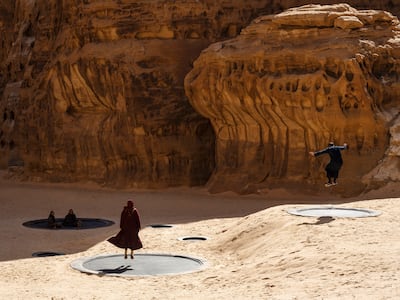
Now You See Me, Now You Don’t is a unique, interactive and powerful installation by Saudi artist Al Dowayan.
Commissioned in 2020 by Desert X, the site-specific, contemporary art exhibition held in the Coachella Valley in Southern California along with the Royal Commission of AlUla, Al Dowayan created a work that addressed climate change and man-made irrigation practices, through the idea of the fleeting existence of water puddles.
The temporary puddle-like installation is made of huge trampolines laid out across the crevasses of the AlUla landscape that can be touched and jumped on by the public. They also glow at night through the use of a series of lighting techniques, activated by the public’s interaction with them.
Among themes of identity, gender and memory Al Dowayan’s practice also explores issues surrounding environmental degradation and climate change.
“Climate change and irresponsible man-made irrigation practices has made water scarcity one of the most important issues facing my country today,” Al Dowayan said of her work.
“These puddles are indicators of the impending water crisis and the disappearance of these puddles is what I want to examine in this artwork, conceptually speaking I am using this artwork to underline the impact of absence and the politics of visibility.”
Abdulnasser Gharem
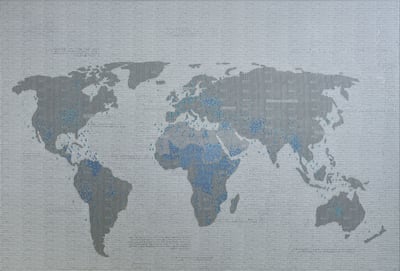
What would the world look like if we became climate refugees? Pioneering Saudi artist Gharem explores this idea through his powerful work Climate Refugee (2022).
The work, made with lacquer paint on rubber stamps mounted on aluminium, depicts a world map highlighting how climate change could impact humanity. The installation features tiny blue and turquoise stamps placed in areas containing the most refugees. Within the work, words such as “the violence of economy” or “the largest marine cemetery is Europe” are written, reinforcing the idea that there is an undeniable link between war and damage to the environment.
While Gharem explores themes such as identity and power in his work, climate change and environmental issues are also subjects he believes are crucial for artists to address in their practice.
Adel Abdessemed
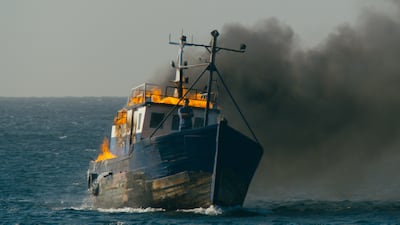
Abdessemed, an Algerian-French contemporary artist, works across a number of mediums including animation, installation, performance, sculpture and video.
While his practice tackles themes of violence in the world in all its forms, from displacement and alienation triggered by war to the effects of globalisation on the individual, Abdessemed also inadvertently addresses issues relating to the climate crisis.
He often uses the physical and symbolic power of fire to represent many of these ideas.
In a photograph from his series Description d'un combat (2020) Abdessemed takes influence from the an early work of the writer Franz Kafka and photographs himself holding a burning globe.
In his work Tonight no man will sleep (2022) the photo is replicated in bronze form, painted black with the globe sitting on his shoulder also one fire. In his video work Jam proximus ardet la derniere video (2021) viewers see a burning ship out at sea with Abdessemed standing on the main bridge, oblivious to the fire behind him.
No matter the medium, Abdessemed consistently reminds viewers of mankind’s active contribution to our own demise and destruction on a global scale.
